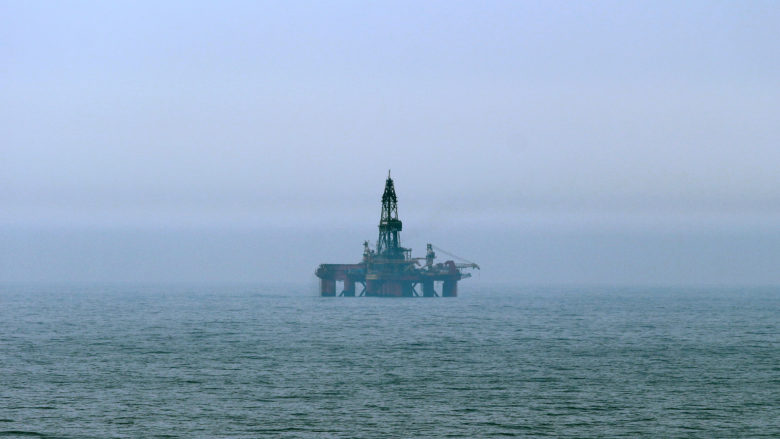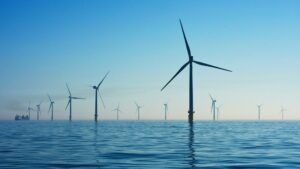“Greensand”: Up to 8 million tons of CO2 are to be stored in the North Sea

According to experts, in order to achieve the climate goals and to be able to curb global warming in time, it will not be enough to reduce CO2. There are now several technologies that will draw large amounts of CO2 from the atmosphere and store it in the future. One of them is Carbon Capture and Storage (CCS). Carbon dioxide, which is produced in power plants, is to be removed directly from the chimneys using special filters, captured, and transported in order to pump it into deep rock layers under the sea and store it there for the long term.
While Germany has so far been reluctant to use CSS technology, which is still in development, it is already widely supported in Denmark. A year ago the government decided to allocate substantial funds to the development of CO2 storage technologies in the North Sea. With the so-called North Sea Agreement, which was concluded on December 3, 2020, by the government, the Left Party, the Radical Left Party, the Danish People’s Party, the Social Democrats, and the Conservatives, according to the Danish Energy Agency agreed to provide a total of more than €26.8 million for the development and demonstration of CO2 storage in the North Sea. A large part of this money will now go to a project with which up to eight million tons of CO2 will be stored per year in the future.
“Greensand” project: storing carbon at a depth of two kilometers
As the Danish Energy Agency on Wednesday, last week announced that the Danish government is now promoting the CCS project “GreenSand“, which is to be saved with the CO2 in the Danish North Sea, the equivalent of €26 million. A consortium of companies is involved in the project, including Ineos Oil and Gas Denmark and Maersk Drilling, as well as the German Wintershall Dea, which confirmed the funding in a press release.
As part of “Greensand”, CO2 is to be injected on a large scale in the so-called Siri area, an oil field in the Danish North Sea, almost 200 kilometers from the coast. According to Ineos, the sandstone fields in which the carbon is to be stored are located at a depth of 1.5 to 2.2 kilometers. According to Ineos, the planning for the pilot phase has already started. “Greensand” is scheduled to start towards the end of 2022. Then it is planned to start injecting CO2 for the first time. If the project goes according to plan, Ineos expects to be able to store around 500,000 to one million tons of CO2 per year from 2025. The storage potential is expected to increase to four to eight million tons of CO2 by 2030. Emissions from industry, in particular, are to be absorbed.
Researchers warn of risks
In the Climate Change Performance Index , a country ranking with regard to their climate protection efforts, Denmark is one of the leaders in climate protection worldwide. According to statistics, the country generates more than 12% of its energy annually from renewable energy sources. The fact that the government is promoting CCS technology seems contradictory, because the capture and storage of CO2 below the earth’s surface are considered controversial. According to the Federal Environment Agency, “generally” no negative effects are to be expected on human health.
Nevertheless, accidents (such as the escape of CO2) can result in severe risks for marine life, as the CO2 acidifies the water and deprives it of oxygen. Leakage also creates risks for groundwater and the soil, for example the released CO2 can release pollutants underground or displace salty groundwater from deep rock layers and saline the sweet groundwater on the surface of the earth.
According to the Federal Environment Agency, the energy required to capture, transport, and store CO2 is also problematic. The use of CCS technology increases the consumption of fossil raw materials by up to 40 percent, according to the Federal Environment Agency. The technology has so far been considered very expensive and can often only be financed and implemented with state aid, as the “Greensand” project now shows.
Environment Minister: Innovation necessary
Despite these criticisms, the government stands behind its efforts to further promote the technology. “New thinking and innovation are necessary if we as a world want to successfully combat climate change. It is projects like this that mark the turning point from black to green,” says Danish Environment Minister Dan Jørgensenin in the press release on the project. “We stopped future procurement rounds and put an end to the oil adventure. Now we will soon be able to pump CO2 back underground.”
The Federal Environment Agency also recommends further research into the technology in order to be prepared for various developments. This is to provide an alternative for emergencies, should the use of CCS prove to be absolutely necessary in the future. According to the Federal Environment Agency, however, the storage of CO2 can only make an effective contribution to combating global warming if the stored CO2 remains permanently and completely – ie without leaks – in the storage facility. Effective monitoring of CCS is therefore a mandatory requirement for the use of the technology.




























